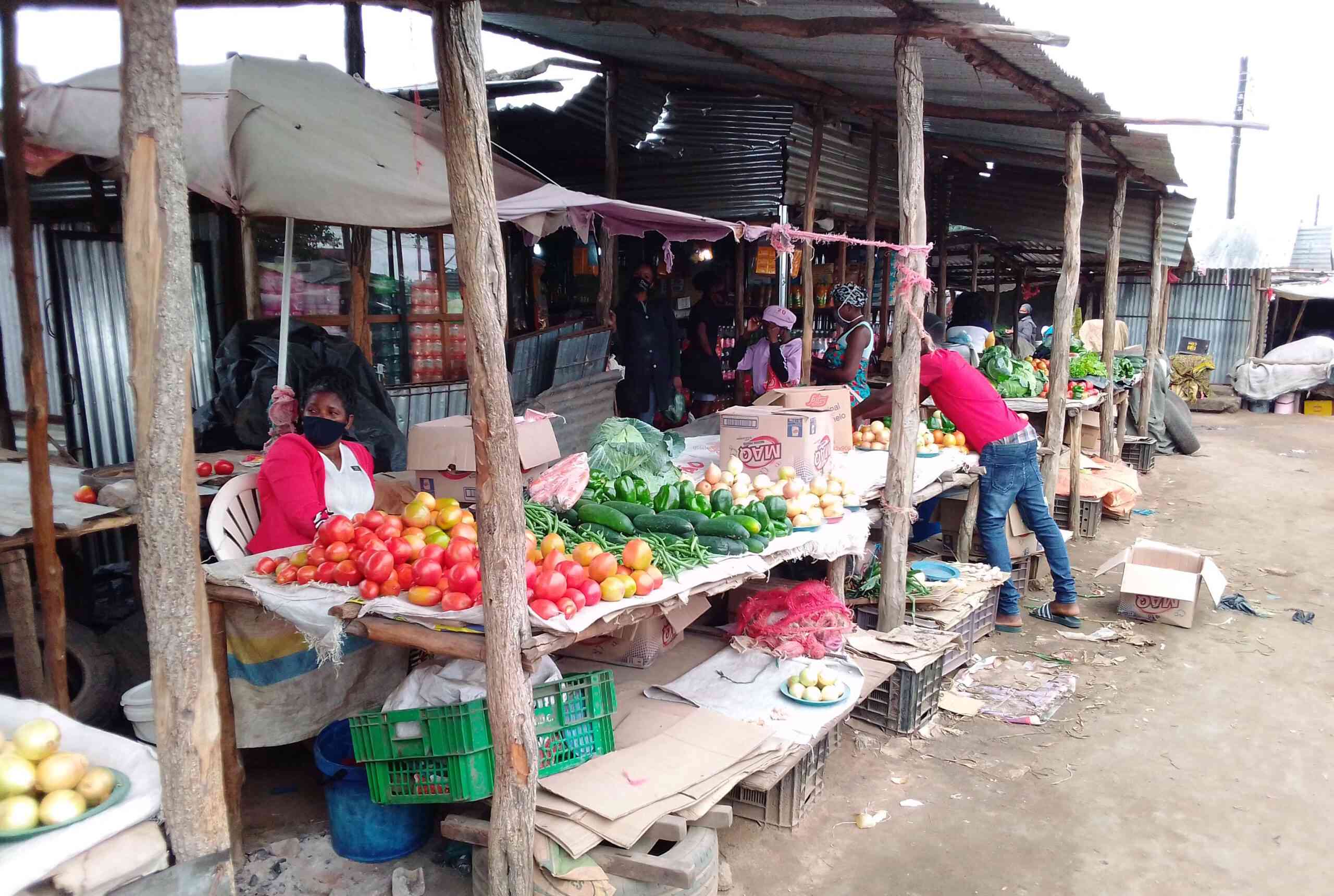
BY TATIRA ZWINOIRA
A 1983 video clip of the late popular American comedian, Richard Pryor, talking to another great funny man, the late Johnny Carson of the long running “The Tonight Show,” has recently found its way onto the local social media.
In the short clip, Pryor is seen holding a walking stick popularly known as “tsvimbo” in Shona, discussing how he got it during a visit to Zimbabwe for holiday.
The reason why the video has gone viral is because a walking stick has been at the centre of a wrangle over the burial of the late former President Robert Mugabe and some mischievous fellows who want his remains, that were buried at his Zvimba rural home, to be exhumed and interred at the National Heroes Acre in Harare “according to local tradition.”
It is alleged that Mugabe was buried with the walking stick or sceptre believed to have mystical powers to pull the sinking economy out of the doldrums and bestow upon the wielder the ability to command respect that enables them to rule the country without challenge.
Now, Mugabe famously did not want to be buried at the National Heroes Acre after his army chiefs ousted him in a coup in November 2017 and replaced him with his former protégé current President, Emmerson Mnangagwa.
But, while the government is concerning itself with exhuming Mugabe, neighbours Botswana and Zambia commissioned the US$269 million Kazungula Bridge which links the two countries, but bypasses Zimbabwe. This bridge threatens Zimbabwe’s position as southern Africa’s key logistical hub, and as some critics say, a way of avoiding the always-congested Beitbridge Border Post, bad road network in Zimbabwe and its poor management.
This is significant because South Africa is the second largest economy in Africa, it is the most developed and the nucleus of trade in the region. At a time when Zimbabwe needs foreign currency through trade and tourism, the effects of Kazungula Bridge’s opening will hit Zimbabwe hard.
- Chamisa under fire over US$120K donation
- Mavhunga puts DeMbare into Chibuku quarterfinals
- Pension funds bet on Cabora Bassa oilfields
- Councils defy govt fire tender directive
Keep Reading
The history of Kazungula Bridge
According to the Botswana government’s official Twitter account, in a thread posted on May 1, the construction of the bridge over the Zambezi River, commenced in December 2014 and completed in October 2020.
The official opening of the bridge took place on May 10 this year.
“The project has three components consisting of the following: Package one (1) is the bridge, which is designed as an extra-dosed road-rail bridge to accommodate a future railway line which will link Mosetse-Kazungula in Botswana to Kazungula-Livingstone in Zambia,” the Botswana government said.
“Single carriageway for motor vehicles, single railway track and pedestrian walkways on both sides. The bridge has specifications of length 18,5 metres width and span arrangement of 923m. This package also includes an approach road on the Botswana side of 302m and 416m on the Zambia side. Packages 2 and 3 are the one-stop-porder Post (OSBP) facilities on the Botswana and Zambia side respectively.
“Each package consists of, among others, a passenger terminal, vehicle inspection building, freight inspection building, truck transit offices (entry and exit), health inspection building and veterinary offices. The packages also cater for internal circulation roads and car parking facilities for buses, trucks and light motor vehicles as well as access roads to the new border posts.”
Funding for the bridge came from Botswana and Zambian governments on an equal basis. The African Development Bank also provided a loan of $76,5 million to Zambia although the primary funding came from the Japan International Co-operation Agency (JICA), African Development Bank and other major stakeholders.
So based on this, Zimbabwe was not involved in the construction of the Kazungula Bridge and is not likely to reap any rewards. It was a product of a bilateral agreement between Botswana and Zambia, seeking to attract more private sector investment, boost tourism and contribute to the advancement of the quality of life of communities in the region.
Implications on Beitbridge Border Post
According to the ‘Population Mobility Mapping Zimbabwe Beitbridge’ report released in October 2020 by the Zimbabwe government and the United Nations International Organisation for Migration, the Beitbridge-Chirundu Road is a busy one. In mapping traffic flows of the area, the report identified both regular and irregular cross border movements between Zimbabwe and South Africa for employment, trade, and commerce, seeking health services, family reunion or for illicit activities.
The illegal activities include those trafficking in persons, smuggling of goods and other illicit activities.
The report adds that asylum seekers mainly transit through Zimbabwe or stay to make their asylum application.
“The major routes for migrants through Beitbridge include of the migrants from Democratic Republic of the Congo who transit through Zambia or Mozambique then Zimbabwe with destination intention of South Africa and followed by migrants moving from the Horn of Africa, including Ethiopia, Somalia, and Tanzania, moving from Zambia or Malawi onwards to South Africa,” read part of the report.
In that regard, two main mobility routes traversing through Beitbridge were identified.
“The route traffic includes commercial vehicles, buses and pedestrians travelling to and from South Africa. The immediate town on the South African side on this route is Musina. On the Zimbabwean site, the route proceeds to Bulawayo and provides a connection between Beitbridge and Matabeleland provinces.”
“It was estimated that 30 to 40% of travellers coming from South Africa, traverse through this route.”
An estimated 6 000 travellers use this route on a peak day when the Beitbridge Border Post is fully operational.
The report found that it is also the busiest route that connects Beitbridge to Masvingo, Mashonaland provinces and the capital city, Harare.
“This route is dominantly used by commercial trucks, buses, and passengers’ vehicles. It was posited that between 60 to 70% of travellers use this route, translating to about 9 000 travellers on a peak day when Beitbridge border post is fully operational,” read part of the report.
What this means is that on a peak day, Beitbridge receives 15 000 travellers who use either private, company or public transport to pass through the border.
Now, the Zimbabwe National Road Administration (Zinara) gets its fees through tollgates from vehicles either passing through or visiting Zimbabwe through the Beitbridge border for purposes of trade or tourism.
For trade, these are truckers delivering goods to other parts of the region and the continent from South Africa.
In a 2005 report titled: Illicit Trafficking of Vehicles Across Beitbridge Border port by the Institute for Security Studies, it stated approximately 1 000 light vehicles and between 600 and a 1 000 trucks travel through the Beitbridge Border Post daily. Zimbabwe’s population at the time was 12,08 million.
Of course, the population has since increased to about 14,2 million.
Factoring the percentage increase to that of 2005 on the vehicle movement, 1 175 light vehicles and 705 to 1 175 trucks travel through the Beitbridge Border Post.
Thus, based on new Zinara tollgate fees in January of vehicles passing through the Beitbridge Border Post, if added you get about US$14 100 a day for US$857 750 annually.
However, it should be noted that this is just from the Beitbridge tollgate, one of many.
Usually, vehicles passing through or visiting Zimbabwe have to pass through several tollgates which would then translate into either tens or hundreds of thousands of dollars daily and millions annually in Zinara fees.
The Kazungula Bridge will also cost Zimbabwe’s tourism sector.
Currently, an average of 84% of revenue or US$302,4 million based on last year’s total tourism revenue of nearly US$360 million (2019:US$1,24 billion) comes from tourists transiting or visiting Zimbabwe by land.
And if the travellers from just South Africa who numbered 152 845 visitors last year, down from 562 643 in 2019 owing to COVID-19 are factored in, Kazungula’s impact would be huge.
Annually, Zimbabwe could lose millions in potential tourism revenue.
Expert opinions
Business leaders admit that the Kazungula bridge will affect the economy both on trade and tourism.
“The bridge is changing the whole scenario because now Zimbabwe is no longer the only link to South Africa and Sub-Saharan Africa,” Tourism Business Council of Zimbabwe president Wengayi Nhau said.
“We now have Beitbridge and Kazungula. Traffic can now go into Botswana, go all the way from Martins Drift (border post on the Botswana side) or Groblersbrug (border crossing between South Africa and Botswana) and all other ports of entry between South Africa and Botswana.
“They can travel right through and still experience the attractions on the way. Then, crossing over (to Zambia) is now through the bridge as opposed to using ferry that was very unreliable. That is now a thing of the past. It is now a two-lane bridge where traffic going north or south does not have to wait for one another, they can now go straight through.
“On the other hand, Zimbabwe has a congested border post in Beitbridge. We have a lot of stop and check points along the way, police, Vehicle Inspectorate Department roadblocks and checkpoints. Some of the roads now need attention in terms of potholes. They need to be attended to so while travelling distance remains the same, time has actually increased a lot,” Nhau said.
He said all those factors will work against Zimbabwe on trade and tourism.
But presidential spokesperson George Charamba took to Twitter suggesting that the country had nothing to fear.
“A tripartite agreement was reached that Zimbabwe will become part of the project once it pays its own contribution. Discussions smoothly underway. Until that payment is done, Kazungula remains jointly owned by Botswana and Zambia. It is that straightforward,” Charamba tweeted on May 11.
“Kazungula Bridge is one part of several routes servicing the north-south corridor. It isn’t the only route. Besides, part of the Kazungula traffic passes through Zimbabwe, a country naturally placed as a sub-regional hub. Any other route through Kazungula which avoids Zimbabwe has to contend with an extra 200 plus kilometres. No sensible logistician ignores that spatial fact in logistical calculus.
“Add to that services for cargo in transit, through-Zimbabwe routes become a logical preference. The route through Botswana complements services on north-south corridor. It doesn’t compete with routes through Zimbabwe. The north-south corridor is the fastest growing corridor on the continent. The sky will be large enough for all birds to fly.”











